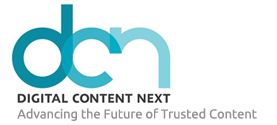The 2016 State of Content Marketing Survey Summary Report from Ascend2 is out, and it confirms what many of us already know: content marketers are still struggling in a variety of ways.
They are mostly concerned with lead generation (58%) and improving customer engagement (55%). Lack of an effective content strategy (48%) and lack of content creation resources (48%) are the biggest barriers to their success—and most of them are still reporting limited success. Half of them say they are “somewhat successful” and 29% claim to be “somewhat unsuccessful.” Only 16% consider themselves be “very successful.”
If you’ve been following the content marketing world, you’ve probably heard some version of all of this before. It’s easy to wonder why content marketing success still eludes so many. But there is some good news. Most companies (89%) say the effectiveness of their content marketing program is increasing. Another 35% say it is “increasing significantly.”
Low down on the list of barriers to success hides “lack of compelling content ideas” with just 25% of respondents listing it as a concern. The mere fact that it ranks so low on marketers list of concerns is worrisome—and perhaps part of the reason they continue to struggle.
Research reports are apparently most effective when it comes to meeting content marketing goals, and it’s easy to see why. Research reports are often downloaded in exchange for information, which inherently produces the leads marketers are looking for. Unfortunately, research reports are the second hardest (62%) type of content to create, right behind videos/podcasts (64%). Research is labor intensive, and time consuming. And it can also be kind of boring.
Content marketing experts are always prevailing on their audience to tell a story. Connect with your potential clients on an emotional level and you’ve got them! But it’s hard to do that with a survey.
 The researchers found that blog posts and videos/podcasts are the second and third most effective types of content. Now, those are storytelling devices! Take, for instance, Frank and the Tower, a short film by REI that tells the story of Franks Sanders, a rock climbing guide who has ascended Devil’s Tower thousands of times over his long career. Sanders is a character in his own right. But for someone like me, who not only recently took up indoor rock climbing, but who also stood at the base of Devil’s Tower as a kid with binoculars in hand, the film really struck a chord. Who knows? Maybe one of the people I saw climbing the tower through my binoculars was Sanders. I think about this video all the time, especially when I’m thinking about which store I’m going to in order to buy more chalk for climbing.
The researchers found that blog posts and videos/podcasts are the second and third most effective types of content. Now, those are storytelling devices! Take, for instance, Frank and the Tower, a short film by REI that tells the story of Franks Sanders, a rock climbing guide who has ascended Devil’s Tower thousands of times over his long career. Sanders is a character in his own right. But for someone like me, who not only recently took up indoor rock climbing, but who also stood at the base of Devil’s Tower as a kid with binoculars in hand, the film really struck a chord. Who knows? Maybe one of the people I saw climbing the tower through my binoculars was Sanders. I think about this video all the time, especially when I’m thinking about which store I’m going to in order to buy more chalk for climbing.
Creating this kind of content is not easy. The production value is top notch, and REI has the kind of subject matter at its disposal that the average brand just doesn’t. That’s why brands need publishers. Videos and podcasts are, in fact, labor intensive. Not only do you need an idea, but you need the storytelling and technical expertise to pull it off. Publishers and their staff have all of those things in spades.
In my book, Inside Content Marketing, I spend the final section trying to convince publishers and content marketers that they need each other and this report only reinforces my belief in the promise of this partnership.
According to The 2016 State of Content Marketing Survey Summary Report, 11% of respondents are outsourcing their content needs entirely. Another 61% are using a combination of outside and in-house resources. Publishers need to make sure they aren’t handing over the content creation business to freelancers and agencies. And if content marketers want to finally break through the wall and join the ranks of the “very successful,” they need to make sure they have the right content—created by the right people—and the means to deliver it to as wide an audience as possible.
With a little team work, publishers can use their content creating expertise to help close the revenue gap they are experiencing in the digital age, and marketers can finally find the success they are looking for.
By day, I am the editor of EContent, where I cover the world of digital media and marketing. By night I am a reader and writer of books, NPR addict, and avid gardener. Find out more at TheresaCramer.com or @Cramerstrasser on Twitter.

 / An inside look at the business of digital content
/ An inside look at the business of digital content Archive
Archive















